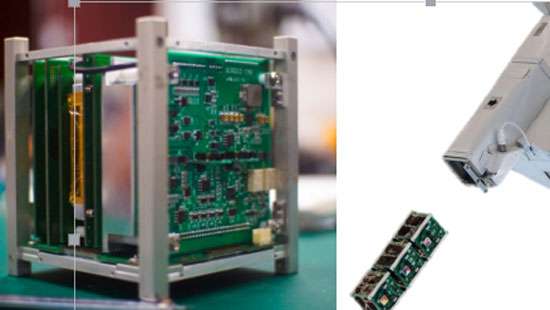Reply To:
Name - Reply Comment

Sri Lanka’s first satellite Ravana 1, designed and developed by two Sri Lankan research engineers will be released into orbit on Monday, June 17th, Director Communication Engineering (Project Manager Nanosatellite projects) at Arthur C. Clarke Institute for Modern Technologies, Kavindra Jayawardena told Daily Mirror.
On Monday, June 17th, 2019 at 2.15PM Sri Lanka time Raavana-1 will be deployed to the 400km orbit at an inclination of 51.6 degrees using the JAXA (Japanese Aerospace and Exploration Agency) owned Kibo experiment module. Two more satellites from Nepal (their first satellite) and Japan will also be deployed at the same time.
The launch of the satellite can be witnessed by logging into the ACCIMT web (http://www.accimt.ac.lk/) site on June 17th or directly through the following “youtube” channel (https://youtu.be/rrw3cMw10nQ).
It will be a great experience for the Sri Lankans and specially those who are interested in space activities.
‘Ravana 1’ would be deployed to 400km orbit, using the Kibo experiment module by JAXA scientists in the International Space Station (ISS).
Mr. Jayawardena said Ravana 1 was launched to the ISS in the 400km orbit by the Cygnus spacecraft of NASA on April 18 at 2.16 am Sri Lanka time by the rocket 'ANTRAS.'
“The spacecraft CYGNUS was connected to ISS by April 20 and it was accepted by the Japanese Aerospace Exploration Agency section in the ISS.
“Ravana – 1, the nanosatellite, signified Sri Lanka’s entry to the field of space research.
RAAVANA-1 which is a cube-seized miniature satellite and Sri Lanka's first research satellite built by two Sri Lankan youth Tharindu Dayaratne and Dulani Chamika marking our entrance into the space age. Tharindu Dayaratne is an Electrical and Electronics engineer of the University of Peradeniya and a research engineer at the Arthur C. Clarke Institute for Modern Technologies and Dulani Chamika is a Mechatronics engineer from the same institute.
The satellite which was designed and built at the Kyushu Institute of Technology in Japan is 1000 cubic cm in size and weighs 1.1 kg.
The RAAVANA-1 was officially handed over to the Japan Aerospace Exploration Agency on February 18, 2019.
The satellite is expected to fulfil five missions including the capturing of pictures of Sri Lanka and surrounding regions, active attitude stabilization which ensures that satellite’s attitude is stable under the influence of external talks. (Sheain Fernandopulle)